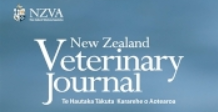Document type: online pre-publication of scientific article in New Zealand Veterinary Journal
Authors: DJ Mellor, M Burns
Preview: This review outlines the processes followed by New Zealand Thoroughbred Racing (NZTR) when developing its Thoroughbred Welfare Assessment Guidelines. It accepted that guidance on welfare management must be based on up-to-date knowledge of how animal welfare is understood scientifically. NZTR established an expert panel to facilitate this process. First, major changes in animal welfare science thinking over the last 40 years were considered. For example, the separate biological function and affective state orientations were later accepted as dynamically interacting elements within the body operating as an integrated whole entity; conceptual problems with the Five Freedoms framework led to the formulation of the Five Provisions and Welfare Aims paradigm and development of the Five Domains Model for assessing nutritional, environmental, health, behavioural and mental facets of animal welfare; and the initial major focus on negative experiences evolved to include both negative and positive experiences. The Five Domains Model was very effective for illustrating up-to-date understanding of animal welfare and its use demonstrated how comprehensive animal welfare assessments may be conducted. The NZTR panel followed a sequential approach that included an update on animal welfare thinking and the Five Provisions and Welfare Aims paradigm; the generic Five Domains Model was refocused specifically on equids; a detailed model assessment of equine welfare practices was conducted; enhanced equine welfare practices were emphasised by comparing them to inadequate welfare practices; guidelines were framed in terms which provide domain-specific advice on provisions that achieve positive welfare; other domain-specific guidelines were focused on welfare-compromising consequences of inadequate provisions; and welfare-appropriate conditions were clarified for all stages of a Thoroughbred's life cycle (in work and rest) to facilitate exercising a life-long duty of care. Finally, the guidelines were expressed in general terms to avoid them becoming overly detailed and unwieldy. They therefore do not address specific welfare issues such as use of whips, bits, spurs and tight nosebands, however the Five Domains Model may also be used for these specific purposes. The guidelines, and the way they were formulated, provide an example of one approach which other organisations may find immediately useful, or which may stimulate them to devise their own approaches when progressing such equine welfare initiatives.




